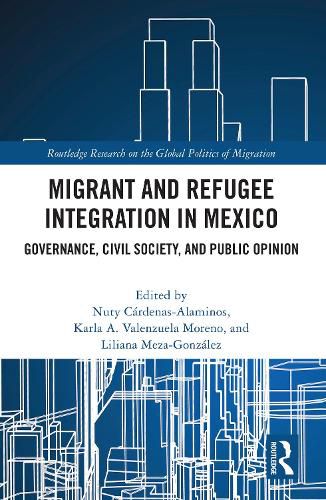Readings Newsletter
Become a Readings Member to make your shopping experience even easier.
Sign in or sign up for free!
You’re not far away from qualifying for FREE standard shipping within Australia
You’ve qualified for FREE standard shipping within Australia
The cart is loading…






Although Mexican emigration to the United States is still relevant, it has also become a return, transit, and recipient country for thousands of refugees. Now, many of these migrants, refugees, and their families stay on Mexican soil territory, trying to integrate within Mexican society.
This book brings together leading experts in Mexico and covers the political dimension of integration for migrants in Mexico analyzing integration policies, civil society efforts, and public opinion from various angles. In this context, many questions arise. Among the most relevant: What has the federal government done to assist these migrant groups, who often arrive in conditions of great vulnerability? What policies have been implemented at the subnational level of government to adequately integrate these population groups? What actions have been implemented by other local actors, such as civil society organizations? What do Mexicans think about newcomers?
Migrant and Refugee Integration in Mexico will be of interest to students and scholars across a range of disciplines including international relations, development studies, anthropology, international studies, sociology, and Latin American studies.
$9.00 standard shipping within Australia
FREE standard shipping within Australia for orders over $100.00
Express & International shipping calculated at checkout
Although Mexican emigration to the United States is still relevant, it has also become a return, transit, and recipient country for thousands of refugees. Now, many of these migrants, refugees, and their families stay on Mexican soil territory, trying to integrate within Mexican society.
This book brings together leading experts in Mexico and covers the political dimension of integration for migrants in Mexico analyzing integration policies, civil society efforts, and public opinion from various angles. In this context, many questions arise. Among the most relevant: What has the federal government done to assist these migrant groups, who often arrive in conditions of great vulnerability? What policies have been implemented at the subnational level of government to adequately integrate these population groups? What actions have been implemented by other local actors, such as civil society organizations? What do Mexicans think about newcomers?
Migrant and Refugee Integration in Mexico will be of interest to students and scholars across a range of disciplines including international relations, development studies, anthropology, international studies, sociology, and Latin American studies.